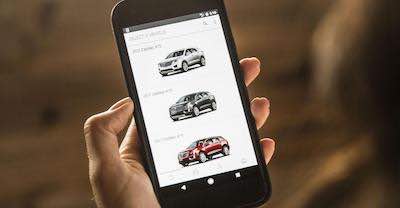Nowadays we tend not to make vehicle ownership a priority. This means that there are fewer and fewer car owners. This fact is favoured by the existence of other alternatives to purchase such as leasing or, as in this case, a subscription car.
This is a very new concept and is closely related to some electric car brands. With flexible terms and conditions, this "car on demand" option is better suited to the fluctuating needs of individual customers.
Table of Contents
How does it work?
A subscription car is a vehicle subject to a contract with special characteristics. The driver pays a monthly fee in exchange for the use of the car for as long as this payment is maintained.
This fee includes a series of advantages, such as maintenance, possible repairs and MOT.

Advantages of this modality
The main advantage of a subscription car is not having to worry about the purchase process. With the subscription, the customer registers online, selects the period of use and the range of kilometres they considers appropriate. Subsequently, they receive the car at home and begin to enjoy it. The only associated costs are fuel, tolls and fines.
Differences with leasing
Although they may seem similar services, they have some differences.
The main difference: The subscription car cannot be associated with a business activity - for this, leasing is perfect as it is a service for private individuals.
Duration of the contracts: In the case of leasing, it is usually between one and five years, while in the case of a subscription car, there is no permanence. It is possible to return the car and stop paying for the service, for example, after one month of use.
Price: As they say, time is money. When a leasing contract is taken out, the relationship between the company and the customer is for several years, so the former is assured of a secure income throughout that time. In contrast, in the case of underwriting, contractual relationships are short. This is why, as a general rule, the price of leasing is lower than that of subscription cars.
In contrast to leasing, a subscription car operation has no down payment or final payment.
Penalty: This is an important difference: in the subscription, the customer can calmly cancel the contract if at any time the need that led him to sign it disappears, without having to pay any penalty. The customer can enjoy the car month by month and cancel it whenever they want.
Similarities with renting.
Always new vehicle: Leasing is a great option to rejuvenate the country's road scene.
Leasing contracts usually have a duration of between two and five years, generally with the same vehicle. In the case of subscription car, one of the great advantages is that they allow you to change model whenever you need to. After the initially contracted period has elapsed, the customer can take out another contract for a new vehicle. This is the best way to always have a new car. Moreover, with the increase in the number of electric vehicles and the improvements expected in the coming years, being able to replace a vehicle will allow you to have all the latest technological innovations.
Fixed fee: This is the great advantage of all types of leasing. It allows you to have control of the expenses and thus save yourself from the inconveniences that may arise from owning a vehicle. Although when purchasing a car what is taken into account is the purchase price, the truth is that there are a multitude of expenses that increase the bill for the cost of owning a car. Insurance, maintenance, taxes, MOT, etc. are some of the expenses that must be taken into account when making the final balance.
When a leasing vehicle is purchased, the payments are fixed and immovable. When the contract is signed, the monthly instalment to be paid for the entire duration of the relationship between the customer and the company is stipulated. There are no further costs.
Without the ownership of the vehicle: It is common when a person is about to buy a vehicle to sell the one he already has. The money obtained can be used to pay part of the cost of the new purchase or, for example, to provide the down payment for financing. This disappears in any type of leasing, since the client is never the owner of the vehicle he/she has contracted. It always belongs to the company, so when the lease ends, the vehicle will be taken back by the company without the customer receiving anything in return.
Maximum mileage: Although subscription and leasing allow the customer to use the car as if it were their own, they also have some limitations. These exist to ensure the proper use of the vehicle and to avoid abusive behaviour. Normally, the leasing contract includes a maximum number of kilometres per month. Exceeding this mileage may result in additional costs. This, in principle, is not a major drawback since most people interested in the subscription do not intend to do more mileage than what is usually offered.
What if we compare it to a rental car?
Actually, with a normal, short-term rental car, whether for a holiday, a trip or a specific moment due to a car breakdown, for example, it is not comparable.
They are two completely different types of services, although it may not seem so.
A holiday car rental, as in most of our cases, rarely lasts more than two weeks. You won't find a subscription for that length of time. What we are likely to find, however, are cars that are commonly used for this business model, as there are car rental companies that use them to supply their fleets.

